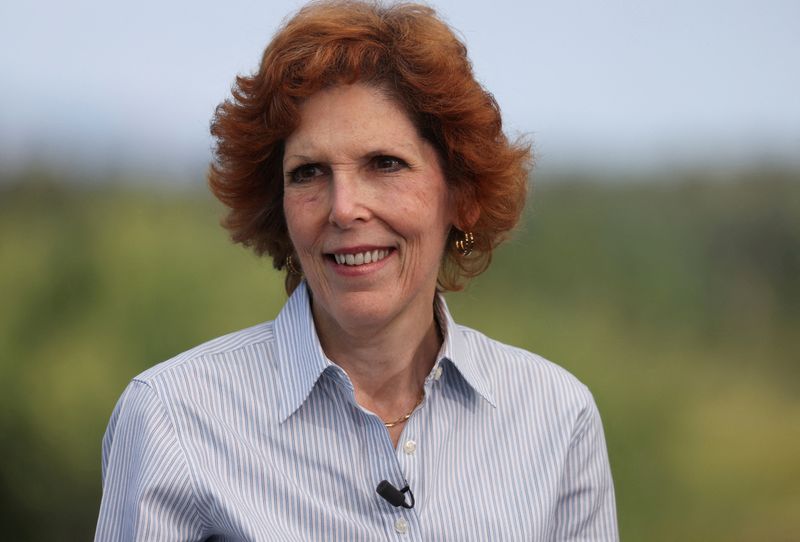
© Reuters. FILE PHOTO: Loretta J. Mester, president and CEO of the Federal Reserve Bank of Cleveland, looks on at Teton National Park where financial leaders from around the world gathered for the Jackson Hole Economic Symposium outside Jackson, Wyoming, U.S., Augus
By Michael S. Derby
NEW YORK (Reuters) – Federal Reserve Bank of Cleveland President Loretta Mester said Thursday she favors taking more concrete steps to make sure banks are ready to use a central bank liquidity facility aimed at helping the financial institutions in times of stress.
Speaking at an event at Columbia University, Mester, as part of remarks that looked broadly at the financial system and how regulators can bolster its safety, flagged some potential reforms of the Discount Window, the Fed’s long-standing tool to provide banks fast liquidity.
Mester said while the Fed has been encouraging banks to make sure they have needed liquidity agreements and collateral in place to access the Discount Window, and have tested the ability to tap the facility, doing all of this should potentially be required.
“Testing at this time is not mandatory, but I support requiring such testing as part of sound liquidity management,” Mester said in her prepared remarks. “It is also worth considering requiring banks to pre-position collateral at the window in proportion to their short-term runnable funding, including uninsured deposits, so they would be ready to borrow at the discount window should that funding start to run.”
Mester’s prepared remarks did not address monetary policy or the economic outlook.
The Discount Window has long faced challenges and many banks shy away from using it because they fear tapping it will signal to other financial institutions they are in trouble. The Fed has tried to overcome this stigma but has struggled to do so.
When banks ran into stress a year ago, the Fed augmented its ability to provide lifelines to banks with a new lending tool called the Bank Term Funding Program. The facility, which shuts down in March, has been heavily used, while the Discount Window has, outside of a burst of lending, been largely on the sidelines.
Mester also said possible changes that could curtail how banks can borrow from the Federal Home Loan Banks could curtail a key liquidity source and drive banks toward more risky funding sources, which in turn increases the risk of liquidity troubles in times of stress. “This increases the need for banks to be prepared to use the discount window as a source of contingency funding,” the official said.
Source: Investing.com




























